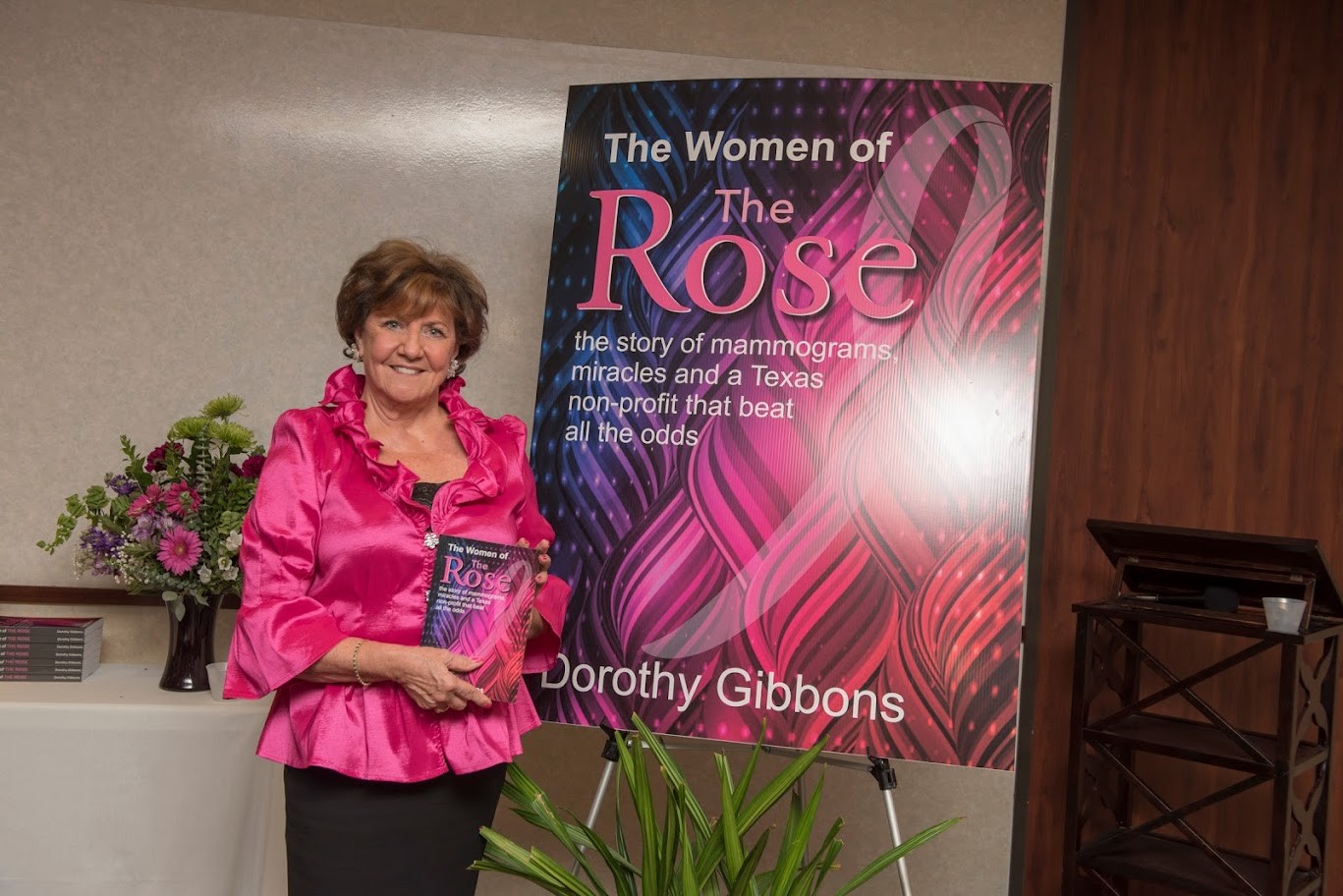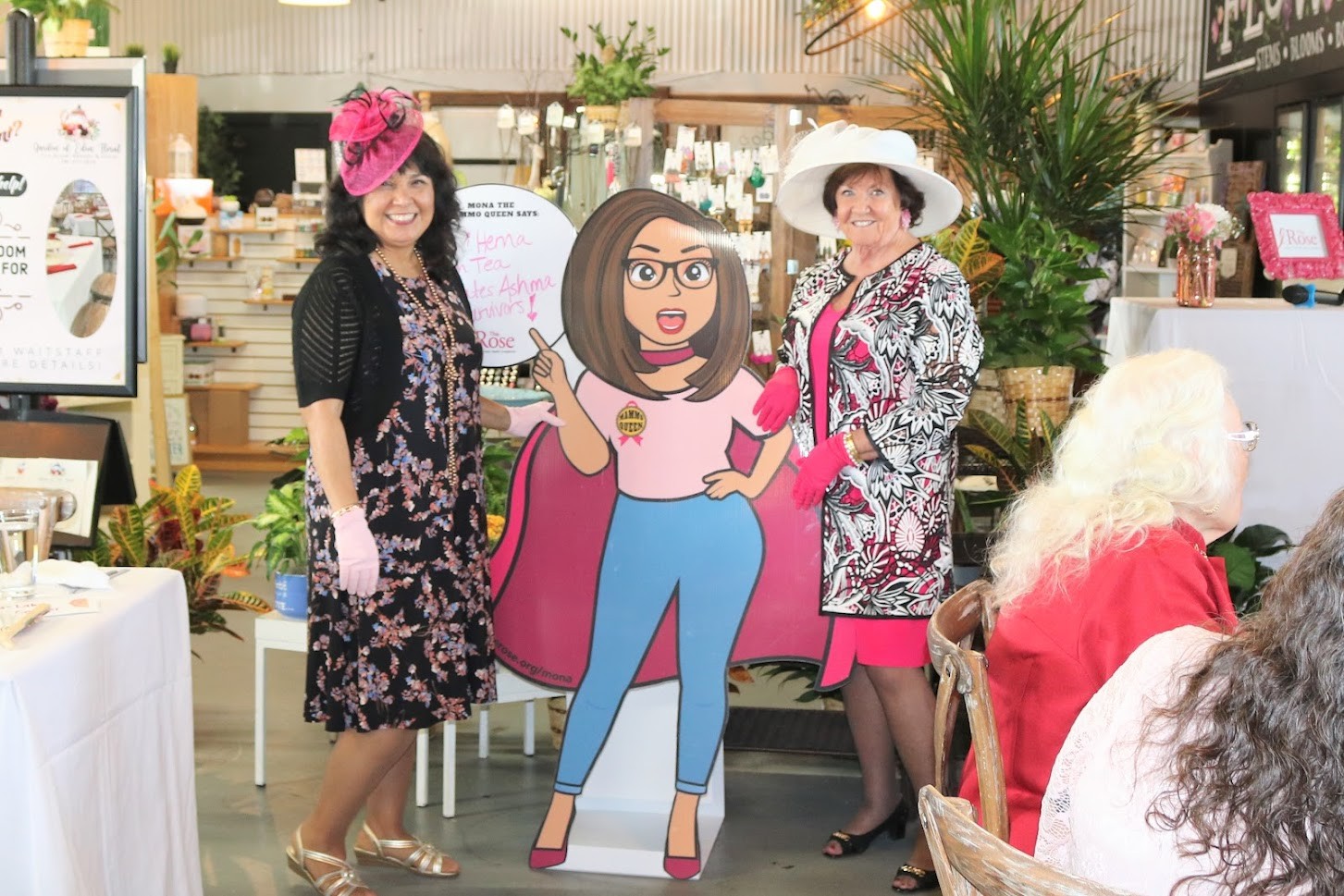We were lucky to catch up with Dorothy Gibbons recently and have shared our conversation below.
Dorothy, appreciate you joining us today. It’s always helpful to hear about times when someone’s had to take a risk – how did they think through the decision, why did they take the risk, and what ended up happening. We’d love to hear about a risk you’ve taken.
Looking at my history with The Rose, it’s easy to see the risks I was willing, albeit, unknowingly ready to make. As I tell my new employees, the good thing about The Rose is we make the decisions around our conference room table, we don’t have to wade through a lot of bureaucracy or wait for corporate to determine our fate. I also tell them that the bad thing about The Rose is it is just us, whether we make it or not depends on us, we don’t have a big healthcare system to support us nor do we have a national organization to fall back on in tough times.
I never thought of personal risks when we founded The Rose. I was so excited to be part of something that could have such impact and was so needed. But the reality is I left a secure job in healthcare that had an upward trajectory and was being groomed for more administrative positions. With that job came the standard benefits: medical insurance, retirement, paid vacation and holidays and a certain level of social standing.
I was heavily involved with The Rose even with holding a demanding job, doing most of its work afterhours. I had completed the application for The Rose’s IRS nonprofit status and wrote every grant proposal that we submitted in those early days. When one of those grants covered my salary, sans any benefits, for six months, I resigned and dove into running The Rose full time. I think the reality of what I had done came when I had to personally guarantee payment for a piece of medical equipment—pretty pricey even in those days. At that time, I had a mortgage, scads of bills, a husband out of work, made very little money and had no savings. But I took a big gulp and signed the papers, otherwise The Rose would have ended before it ever really began.
Taking risks goes with most any entrepreneurial undertaking especially at its start-up. Nonprofits carry the extra unknown of dependence on fundraising and the generosity of people. Throughout the past 35 years, there have been plenty of other times I took big risks, but the difference between now and the early days is the gift of having a supportive and capable staff who are willing to go the extra mile and assure me that we can ‘do it!’
Still, taking that kind of career risk can’t compare the risk of trusting my heart to another at the age of 53, after two failed marriages. Thank goodness, he was worth it.


Awesome – so before we get into the rest of our questions, can you briefly introduce yourself to our readers.
The Rose was different from the beginning. I truly believe the Universe brought Dr. Dixie Mellilo and me together. It had bigger plans for us than we could ever have imagined. So there we were two women, who had absolutely no experience in nonprofits but did have big ideas about serving women, starting an organization where every woman was served regardless of her ability to pay. In the mid-eighties, mammography was not widely recommended primarily because there was no reimbursement for screening mammograms. Dedicated mammography equipment was just making its debut, and only the most aggressive healthcare administrators were willing to invest in this thing called “Women’s Health.” But we did. Our ‘business plan’ was simple: we would provide screening mammograms with radiology reading for a total cash price of $50 to those who could pay and free to those who couldn’t. A local company donated our first mammography machine and our first fundraiser was a bachelor’s auction that raised $7,000. Yes, we sold men to raise money to open our first breast imaging center, probably not the most socially acceptable event these days. Dixie gave hundreds of educational presentations about the importance of early detection to the community, and I kept writing the grant proposals.
Before long, doctors were referring patients, women were insisting on using The Rose and those that needed help found it.
Since 1986, we have served nearly 1 million women and men. The Rose is designated as a Breast Imaging Center of Excellence, a recognition held by only 14 total centers in Houston. We provide screening mammograms and a full range of diagnostic services, including biopsies with on-site physicians through two Houston-based breast diagnostic centers. We reach 40,000 people a year by delivering direct medical services and another 20,000 through educational activities. In addition, our four mobile mammography coaches travel hundreds of miles each year, reaching women in 43 counties of southeast Texas.
But numbers rarely tell the real story of any organization. What we do is provide women an option.
For those women who have insurance, we offer the highest quality care and imaging and the option of helping The Rose care for uninsured women and men. For those who are uninsured and meet the income criteria, we provide all the same services plus the knowledge that if they are diagnosed with breast cancer, we will help them access treatment. That is an option of life and survivorship for those with nowhere else to turn.
Both insured and uninsured have the assurance that top-rated physicians and healthcare staff perform their care, people who understand their fears and are able to address their needs.
I’m always proud when someone tells me: I know about The Rose; they helped my cousin, mother, friend, or coworker. Prouder when I hear a story from someone we helped, someone who had treatment because of our programs, even when they weren’t insured. They tell me how they have gone on to live a full productive life, and many have become our most incredible supporters.
But I’m the proudest of my staff. They embrace our mission and truly do whatever it takes to see our patients through, from screening to diagnosis and beyond. They are the ones who listen to our patients, look into their eyes and smile when they say: “We can help.”
How’d you build such a strong reputation within your market?
The Rose is mission-based. That phrase is often linked to nonprofits but at the end of the day, any business must identify its mission and more importantly, align its decisions within the scope of that mission.
Mission is more than nice-sounding words adorning a plaque on the wall; it’s the core of what you do day in and day out. It’s what your employees see you do and how they are empowered to make decisions. It’s how the community comes to trust you’ll do what you say you stand for, and that trust is the basis of any success. Simply put, if it isn’t mission-based, we won’t do it.
The competition for funding is fierce, and sources can change overnight, making the temptation of mission creep a reality. Mission creep occurs when an organization takes on new activities that lie slightly outside the core purpose or mission. As efforts and resources flow in that direction, the organization’s outcomes shift. Sometimes they shift so much in trying to ‘chase’ the money that the organization takes an entirely different course other than its original mission.
One of the best examples of how being mission-based impacted our business decisions was when 3D tomosynthesis mammography was being introduced. As with many new tests, 3D imaging had not yet received FDA approval for Medicare reimbursement, a process that can take years to complete. Many breast centers went ahead and installed the new equipment but charged women an additional fee for 3D imaging, with fees ranging from $60 to $150.
Basically, this technology, which was being touted as the new standard of breast imaging, was available to those who could pay but not to the uninsured, even at public facilities.
Early on, we decided that our 3D imaging would be available to all our patients. Financially, it might have been beneficial to adopt what other centers were doing but not when it went against the mission.
At The Rose, our mission is access to health care regardless of a person’s ability to pay. Our core competencies are in the breast cancer arena. While we primarily serve women, men are diagnosed with breast cancer also, and either gender could be uninsured.


Any advice for managing a team?
Let them do their work. Get out of the way and let them shine.
I believe people come to work wanting to do a good job—when they can’t, morale suffers.
Leaders need to ensure that their employees have the tools they need, the training they deserve, and the systems that support their work.
I’m fortunate that our supervisors aren’t afraid to have their employees make decisions and trust their employees’ judgment. No one likes to fail, but our failures are usually the best teachers. So as leaders, we need to demonstrate our own vulnerability, let employees know when we fail and invite them to rejoice with us when things go well.
There have been hundreds of times over the past 35 years when I knew our systems weren’t supporting the work we expected of our teams. I would watch in wonder as my staff found ways to make things work despite the limitations of the systems. True, sometimes the workarounds proved disastrous, but just as many times, they were brilliant and innovative. Those times, when we didn’t have the most advanced systems, always reminded me that people don’t fail on purpose; systems fail people.
Of course, team building is not all about technology; it also requires personal involvement and engagement with employees. I admit that is something that hasn’t been easy these past two years with isolations, conversions to working remotely, and all the other uncertainties evoked by COVID.
Every organization needs a set of values that employees embrace and understand.
In 2018, we decided to take a totally different approach to review our values. Every person in the organization participated, and after four months of meetings, discussions, and a process of elimination, we determined what really mattered to us as an organization. My teams decided on five values: 1) Integrity and honesty; 2) Spirituality; 3) Family; 4) Dependability, and 5) Teamwork.
I was surprised to see Spirituality rise to the top. We aren’t a faith-based organization, but my team insisted that our prayer list and other similar practices reflect this as a value. We all agreed that we believe that spiritual and sacred forces beyond our understanding influence and guide our work.
I also questioned the wisdom of including Family as a value. Again, my team reminded me that family has always been a priority at The Rose. Whether it is recognizing that everyone has a family which also requires attention or if we want our patients to feel they are treated like family, or we hold each other accountable as in a family, this value is important.
I was so proud of the final list, proud of how my employees think and feel about their work, and glad to be a small part of their lives.
Contact Info:
- Website: Therose.org
- Instagram: https://www.instagram.com/therosehouston/
- Facebook: https://www.facebook.com/TheRoseBreastHealth
- Twitter: TheRoseHouston


